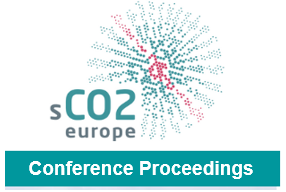Cooling system cost and performance models for economic sCO2 plant optimization of cooling with respect to cold sCO2 temperature
Several studies have shown that the efficiency of sCO2 power cycles can be significantly improved by reducing the cold sCO2 temperature, which increases the sCO2 density at the inlet to the compressor and reduces its specific power requirement. Due to the near-ambient CO2 critical temperature of 31 °C, the effects of ambient temperature on sCO2 plant performance are far more significant than for steam Rankine cycles, thus cooling systems tailored to sCO2 cycle operation are necessary to realize the benefits that are possible through sCO2 cold temperature management.
To this end, cost and performance models for four different types of sCO2 cooling systems are presented in this work. These systems cover direct and indirect (via water) cooling of the sCO2 working fluid, as well as wet and dry cooling techniques to approach ambient wet and dry bulb temperatures, respectively. The heat and mass transfer modeling of these systems are briefly reviewed along with the cost scaling algorithms that have been developed from a combination of literature, cost modeling software, and vendor quotes.
The results of these efforts are a set of sCO2 cooling system spreadsheet modeling tools that are available for download by the sCO2 community. The cooling system models can be used by cycle designers to weigh the benefits and drawbacks of various cooling systems in terms of equipment cost, auxiliary power requirements, and water usage. Detailed modeling and capital cost estimation of these cooling systems as a function of ambient conditions and assumed temperature approaches also allows for optimization of the cold sCO2 temperature to minimize the overall cost of electricity (COE) for a given plant location, accounting for the increased cooling equipment cost required to achieve this temperature. Preliminary economic optimization using these spreadsheet models shows that cooling system optimization improves indirect sCO2 plant efficiency by 3-4 percentage points, and reduces COE by up to 8%, demonstrating the value and utility of this approach.
Vorschau

Zitieren
Zitierform:
Pidaparti, Sandeep R. et al. (2019): Cooling system cost and performance models for economic sCO2 plant optimization of cooling with respect to cold sCO2 temperature. In: 3rd European Conference on Supercritical CO2 (sCO2) Power Systems 2019: 19th-20th September 2019. S. 332–344. Online unter: https://nbn-resolving.org/urn:nbn:de:hbz:464-20191004-154553-5.
Zitierform konnte nicht geladen werden.
Rechte
Nutzung und Vervielfältigung:
Dieses Werk kann unter einer Creative Commons Namensnennung 4.0 Lizenz (CC BY 4.0)
Creative Commons Namensnennung 4.0 Lizenz (CC BY 4.0)
genutzt werden.
